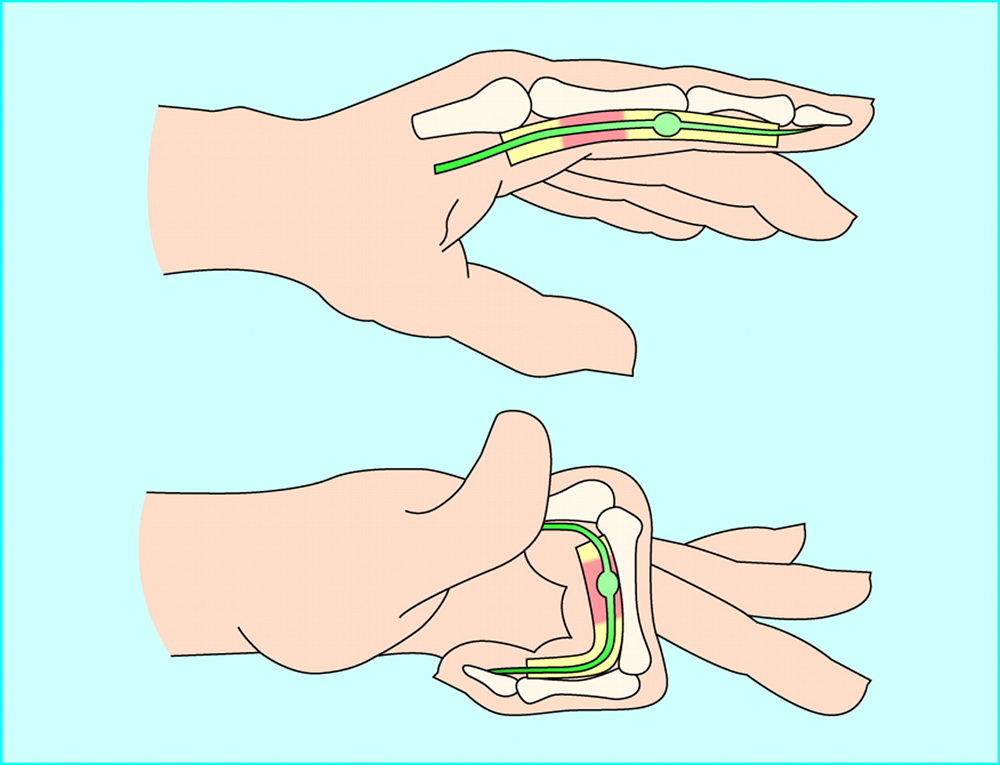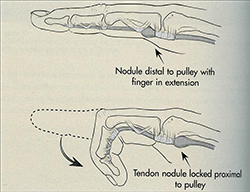Trigger Finger

Stenosing tenosynovitis, commonly known as trigger finger or trigger thumb, involves the pulleys and tendons in the hand that bend the fingers
(see pictures below). The tendons work like long ropes connecting the forearm muscles with the fingers and thumb bones. In the finger, the pulleys form a tunnel under which the tendons must glide. These pulleys hold the tendons close to the bone. The tendons and the tunnel have a slick lining that allows easy gliding inside the pulleys (see below left: Normal finger). Trigger finger/thumb happens when the tendon develops a nodule (knot) or swelling of its lining. When the tendon swells, it must squeeze through the tunnel's opening (flexor sheath), which causes pain, popping, or a catching feeling in the finger or thumb (see below right: Abnormal finger). When the tendon catches, it produces inflammation and more swelling. This causes a vicious cycle of triggering, inflammation, and swelling. Sometimes, the finger becomes stuck (locked) and is hard to straighten or bend.
What causes it
The causes of this condition are not always clear. The medical conditions of rheumatoid arthritis, gout, and diabetes may be associated with trigger finger/thumb symptoms.
 Signs and symptoms
Signs and symptoms
Trigger finger/thumb may start with discomfort at the base of the finger or thumb. A thickening may be found in this area. When the finger begins to trigger or lock, the patient may think the problem is at the finger's middle knuckle or the thumb's tip knuckle.
Treatment
The goal of the trigger finger or thumb treatment is to eliminate catching or locking and allow full movement without discomfort. Swelling around the flexor tendon and tendon sheath must be reduced to enable smooth gliding. A splint, oral anti-inflammatory medication, or injection into the area around the tendon may be recommended to reduce swelling. Treatment may also include changing activities.
If non-surgical forms of treatment do not improve symptoms, surgery may be recommended. This surgery is performed as an outpatient. Surgery aims to open the first pulley so the tendon will glide more freely. Active motion of the finger generally begins immediately after surgery. Routine use of the hand can usually be resumed once comfort permits. Some patients may feel tenderness, discomfort, and swelling in their surgery area longer than others. Occasionally, hand therapy is required after surgery to regain better use. Routine use of the hand can usually be resumed once comfort permits. Some patients may feel tenderness, discomfort, and swelling in their surgery area longer than others. Occasionally, hand therapy is required after surgery to regain better use.
American Society for Surgery of the Hand website: http://www.assh.org/Public/HandConditions/Pages/TriggerFinger.aspx




